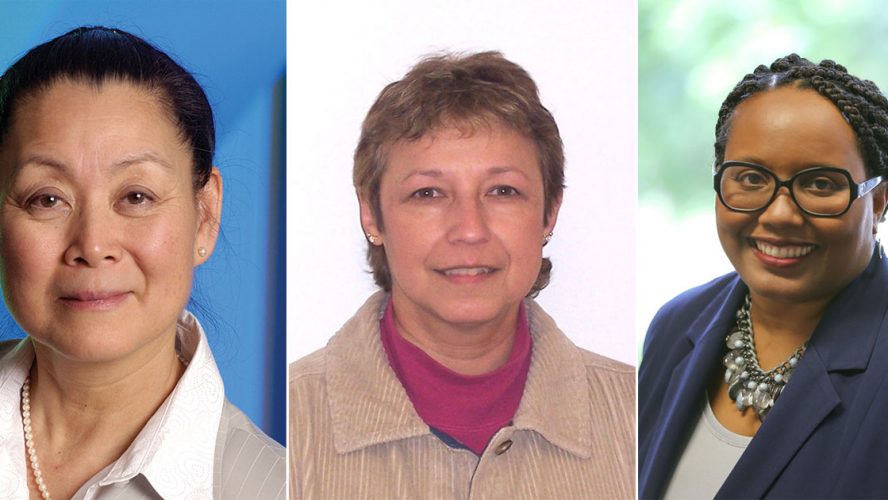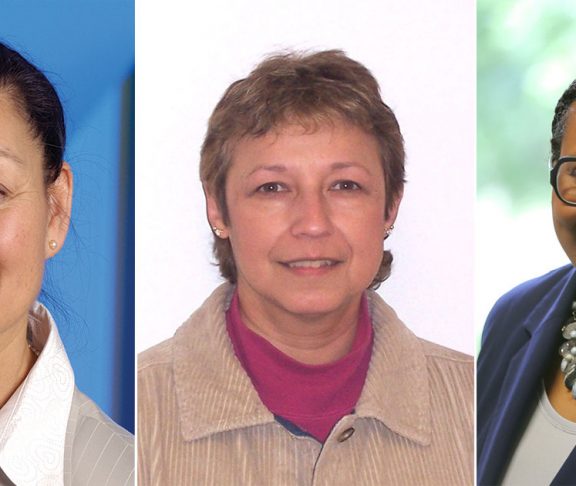Only 13 percent of engineers in the United States are women as of 2019, and this is a huge problem not just for women trying to advance in this field, but for society as a whole.
Like many other science, technology, engineering, and mathematics (STEM) fields, women and people of color are drastically underrepresented in engineering jobs and especially in leadership positions. According to recent research, women make up only 13 percent of the workforce in engineering. This is a problem not just for equality’s sake, but for society as a whole. Mel Cossette, Dianne Chong, and Dr. Yvette E. Pearson are three women of color who have defied the stats and risen to high level leadership roles in their engineering careers, and can speak directly to the barriers women and people of color face to reaching the top of the field, and why it’s so important to include diverse perspectives in engineering.
Rising in the ranks
When it comes to professional advancement for women, Cossette emphasized the importance of mentorship and self-advocacy, and Chong pointed to larger, cultural problems that create invisible barriers to women.
“I think there still is a little bit of a male mindset where men are still making a lot of these selections and they tend to pick from a huge population of men,” she said. “Now people will, in my experience, look for women or minorities for a slate or two to interview, but I question the motivation sometimes. Is it just to say, ‘I had a diverse slate,’ even though in the back of my mind, I’m gonna choose this white male over here.”
Dr. Pearson pointed to research indicating deeply entrenched and systemic biases that hold women, especially women of color, back. “Women and people of color are often given assignments that are more service-laden and less technical in nature and these are not the things that typically count when it comes to advancement opportunities and pay raises,” she said.
She also noted that women are perceived as less competent leaders or less committed to their work. “There’s research showing that women are rated lower on performance evaluations and specifically, lower in perceptions of their competence, their promotion potential, leadership skills, and oftentimes are perceived as less committed to our work a lot of times because of the roles we play as caregivers and oftentimes parents.”
Improving engineering through diversity
While it is clearly important to encourage more career opportunities for women in these fields for equality’s sake, there are other reasons it is important to include diverse perspectives and backgrounds in engineering. Through bucking convention, adopting a more collaborative leadership style, and introducing fresh viewpoints, engineers can improve the quality of their work and even the quality of society.
Once, Cossette said, in a new role as a liaison between the shipping warehouse and the engineering team at a company, she noticed potential in a woman employee that she suspects a man in her position would be less likely to spot due to entrenched norms and traditions. “I learned that it was traditional for only males to be in the shipping and receiving area of that company. And I wasn’t quite sure why, but I was walking around the floor and I observed there was a woman who had great organizational, spatial skills,” she said. Cossette decided to move this employee to the warehouse department and found that she excelled so well in the position, by creating safer and more efficient storing and shipping systems, that she saved the company money and time, benefiting both the engineering and shipping teams
Some women also observed a difference in leadership styles between women and men, and that women’s more cooperative approach can lead to more creative and efficient solutions.
“[Women] tend to look at problems very holistically, and I think that comes from having to juggle a lot of things — if they have a family or a spouse and they tend to be the one that has to make a few compromises and they understand how to collaborate,” Chong said.
She says that while this is not universally the case, she has noticed a trend in men, especially those who have been working as engineers for a long time, to take a more “my way or the highway” approach. “Having more women engaged really helps get to better solutions because the style of being able to listen carefully, not feeling that their solutions are the only solutions — which I have observed in some men, especially if you’ve been an engineer for a long time.”
Creating a more equitable society
Pearson notes that a paucity of diverse voices and backgrounds in engineering has led to societal failures, that can sometimes have devastating consequences. “One thing I always say is that society is not one size fits all so our solutions to societal challenges can’t be one size fits all,” she said.
Pearson provided a few examples.
“Studies have shown that facial recognition technology is inaccurate when it comes to correctly identifying Asian people and Black people and that it’s least accurate of all in identifying Black women…It’s led to a lot of false arrests of Black people,” she pointed out.
“And there are examples for instance with the design of car restraints and protection systems being based on what was the “average male” in the U.S. in the early 1970s. And so, all of the crash test dummies are built on some version of this model and as a result you see more serious injuries and more fatalities for women in car accidents.”
Dr. Pearson, who has a disability, also warns that even if a design meets all the legal requirements for accessibility, it doesn’t mean it is accessible in practice for all people. “The best way to design for accessibility is to include the perspectives of those of us with disabilities.”
Finding solutions
So, what is the best way to correct this imbalance? Dr. Pearson, Chong, and Cossette participate in community outreach and recruitment in a variety of ways. Speaking engagements at high schools, for example, can show young women of color that there is a place for them, too, in STEM fields. Targeted recruitment of women and people of color for entry-level jobs is another way. Equally important is having everyone in an organization contribute to an equitable and inclusive climate and culture in which all people can maximize their potential.
Dr. Dianne Chong is the President-Elect of the ABET Board of Directors and was Vice President of Research and Technology in the Boeing Engineering, Operations & Technology organization.
Mel Cossette is the Principal Investigator and Executive Director of the National Resource Center for the Materials Technology Education (MatEdU) at Edmonds Community College
Dr. Yvette E. Pearson is the Founder and Lead Consultant of The Pearson Evaluation and Education Research Group (The PEER Group) and an Associate Dean in the Brown School of Engineering at Rice University.

